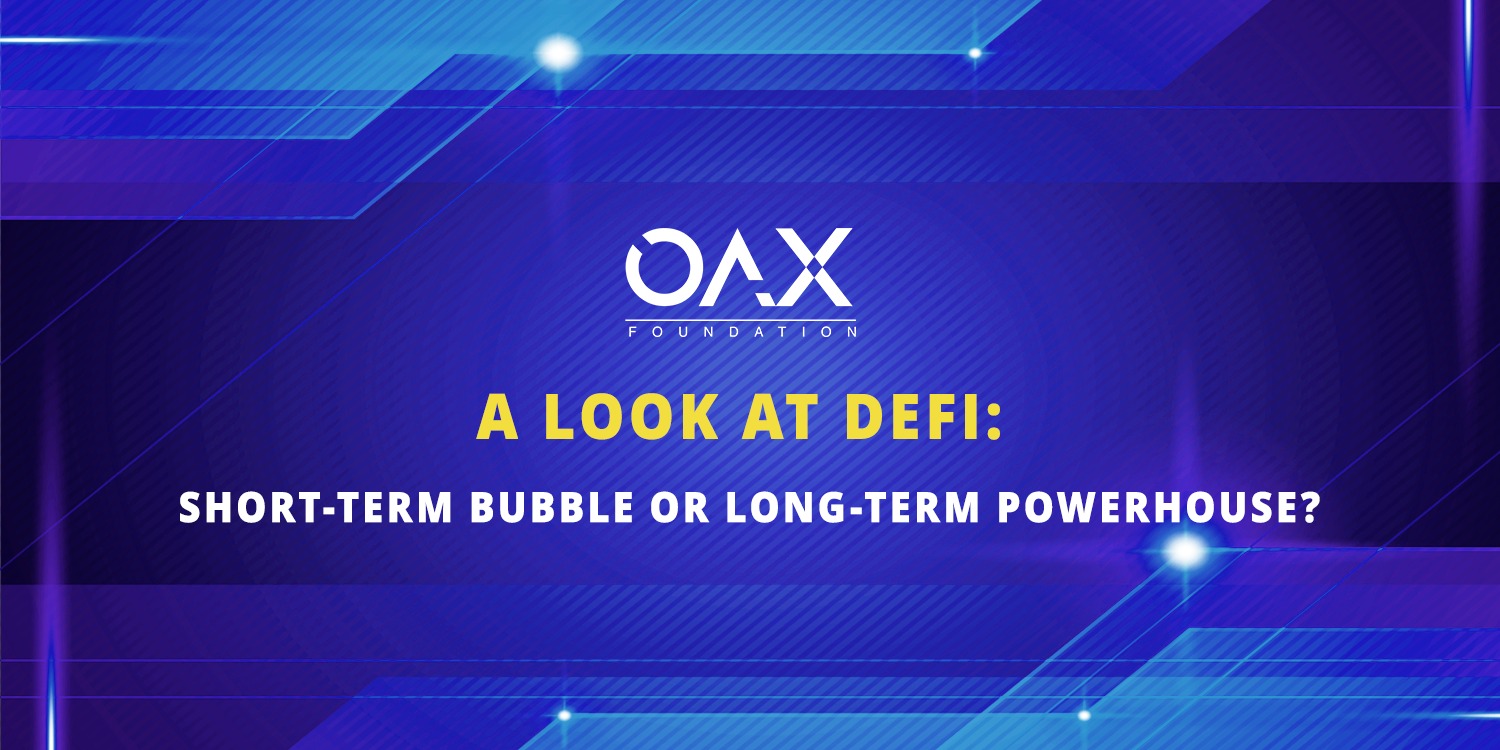
Rumours of DeFi’s Demise Have Been Exaggerated
Recent falls in indices tracking defi tokens have had commentators calling the imminent demise of DeFi. Some labelled it another bubble which has now burst. We would argue that news of DeFi’s demise are exaggerated: the DeFi proposition remains as sound as it ever was.
If we separate market fluctuations, driven by exogenous market factors, from DeFi’s inherent qualities, we see numerous reasons for confidence – and volatility shouldn’t deter participants from working on the applications that will keep driving the technology toward wider application. This communal effort is one of the strengths of the ecosystem that over time will create a broad, stable DeFi platform with useable products and services for consumers.
A Year of Shocks
In the first seven months of 2020, DeFi token prices increased by 220% on average. But in early October, Binance’s Defi index (which tracks 19 popular defi tokens) lost half of its value. By the same date, the DeFi Pulse benchmark run by TokenSets, tracking the ten largest DeFi protocols according to total value locked (TVL), or the value of assets housed in smart contracts, lost nearly 33% of its value.
What lies behind this loss of confidence in DeFi? In the last few weeks, as yields started to fall, some crypto collateral was withdrawn from DeFi protocols. DeFi Pulse reported that TVL across all platforms declined by 9.3% from its record high in September. When these liquidations occurred, transaction volumes increased as investors moved assets to cover shortfalls in their positions, driving transaction fees higher. In effect, a negative spiral occurred as liquidity dried up.
Short-Termism Rules
Some commentators point to a number of recent token pump-and-dump schemes as symptomatic of participants’ continued focus on short-term gain, which increases price volatility. These scams typically involve a much-hyped token launch after which the issuer cashes out of their holdings, undermining the price and leaving investors holding severely devalued assets.
The effect of these events is to undermine confidence in the value of current holdings; in addition, those wanting to commit to longer-term investment and ecosystem growth can’t find enough places to invest.
In addition, most people making money out of DeFi are doing it through yield farming: lending their cryptoassets in exchange for a fee to promote liquidity on DeFi platforms. During the height of the market, demand was so high that returns topped 1,000%. A similar short-term strategy which can net investors a return on their tokens is yield-hopping: moving tokens from platform to platform in pursuit of the highest payback.
This short-term tendency in investor outlook exacerbates price volatility and index volatility, preventing confidence from growing in a more stable environment, but perhaps we may begin to see changes as a new investor group begins focus more in this space.
Fundamentals Remain Strong
In a bid to assess the health of DeFi, rather than monitoring volumes and prices, it’s interesting to take note of TVL which is a different yardstick for the state of DeFi. And in fact, despite falling prices, TVL continues to rise: in the last week it was about $11.29 billion, and could be heading for an all-time high.
While some question the validity of TVL as a yardstick for DeFi health, citing the possibility of airdrops of additional tokens to subsidise users, the ongoing rise of TVL indicates an underlying commitment to using tokens within DeFi protocols as a generator of yield.
DeFi’s Attractions
DeFi still offers all the attractions of decentralisation we have mentioned in the past: the security, interoperability and automation offered by decentralised technology, all of which promise huge potential to revolutionise the existing financial services landscape.
While the ultimate benefits to consumers is clear, institutional interest in crypto trading is also increasing: a recent survey of investment firms by Fidelity revealed that more than 33% of respondents’ portfolios have direct or indirect investments in digital assets. In addition, the number of U.S. investors holding digital assets grew from 22% last year to 27% in Q2 2020.
Institutional participation, including via derivatives products linked to cryptoassets, not only indicates growing credibility for cryptoassets in general and DeFi in particular, but also promises to boost volumes and market cap, driving greater stability in DeFi markets.
Such participation also highlights where improvements still need to occur. Scalability remains the grail, particularly in such a way as to keep products and services as decentralised as possible – a key attraction of the technology. The governance of blockchains also requires careful development to ensure that their inherent security remains strong while the network is run fairly. When markets are troubled, strong governance is essential to ensuring disputes are resolved fairly, maintaining confidence in the system.
Our Takeaway
DeFi is still in its infancy. Developers know it’s important to create functioning use-case scenarios based on the various layers of technology underlying DeFi which consumers and institutions can engage with. Such engagement enables these participants to familiarize themselves with the workings of blockchain, its unique economics and development characteristics, and contribute to the technology’s progress. Contributions by a variety of participants bring a healthy range of views and solutions that ultimately strengthen the overall offering. This in turn contributes to the process of to pushing DeFi forward, tackling existing loopholes and strengthening the overall proposition.
Recent token price falls were to be expected – a correction due to technical factors in the market. In the longer term, we see the case for DeFi as strong as ever. The DeFi community is travelling in the right direction. Fluctuations are short-term; we are focused on the long term – and DeFi’s long-term promise has not changed.


